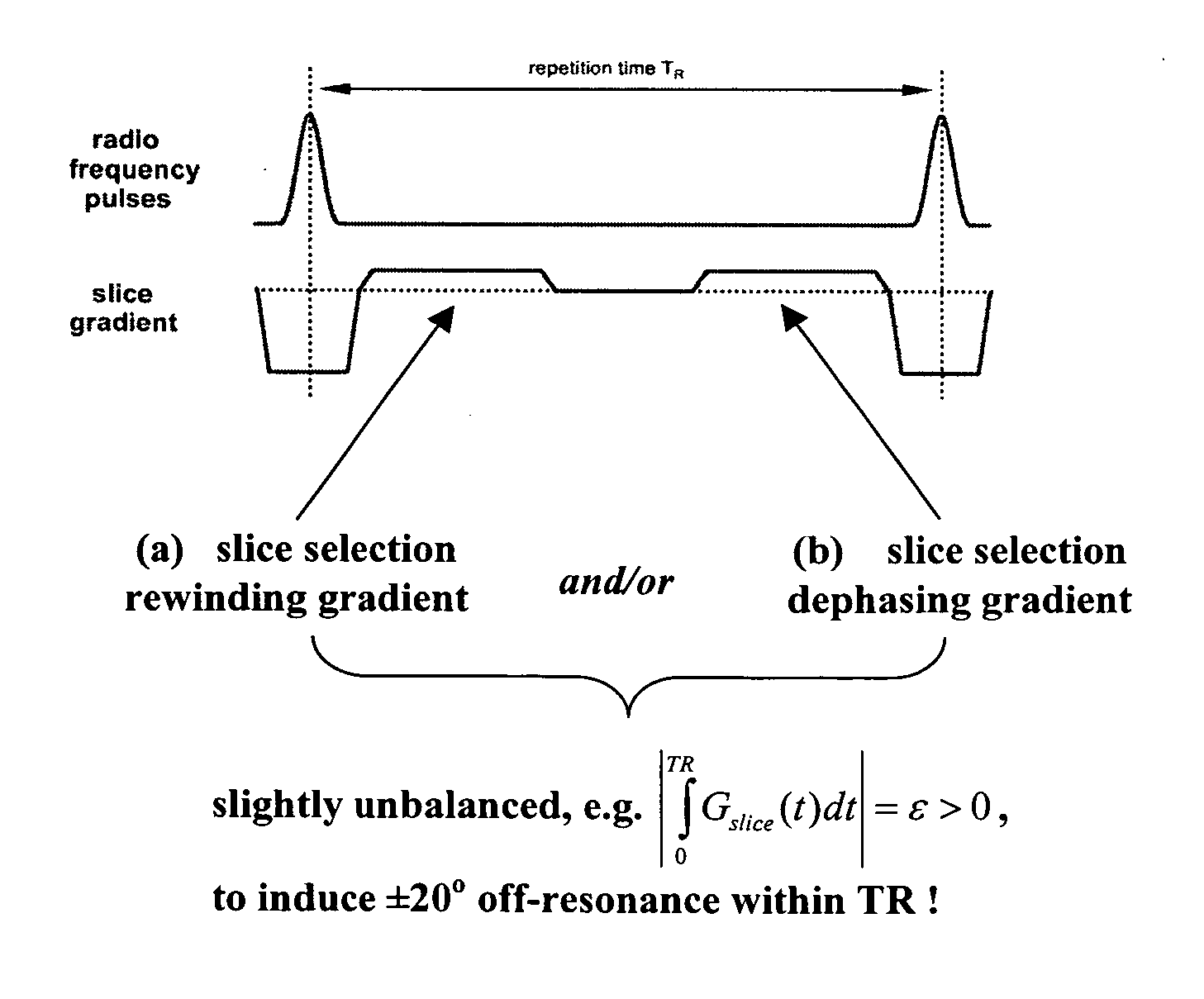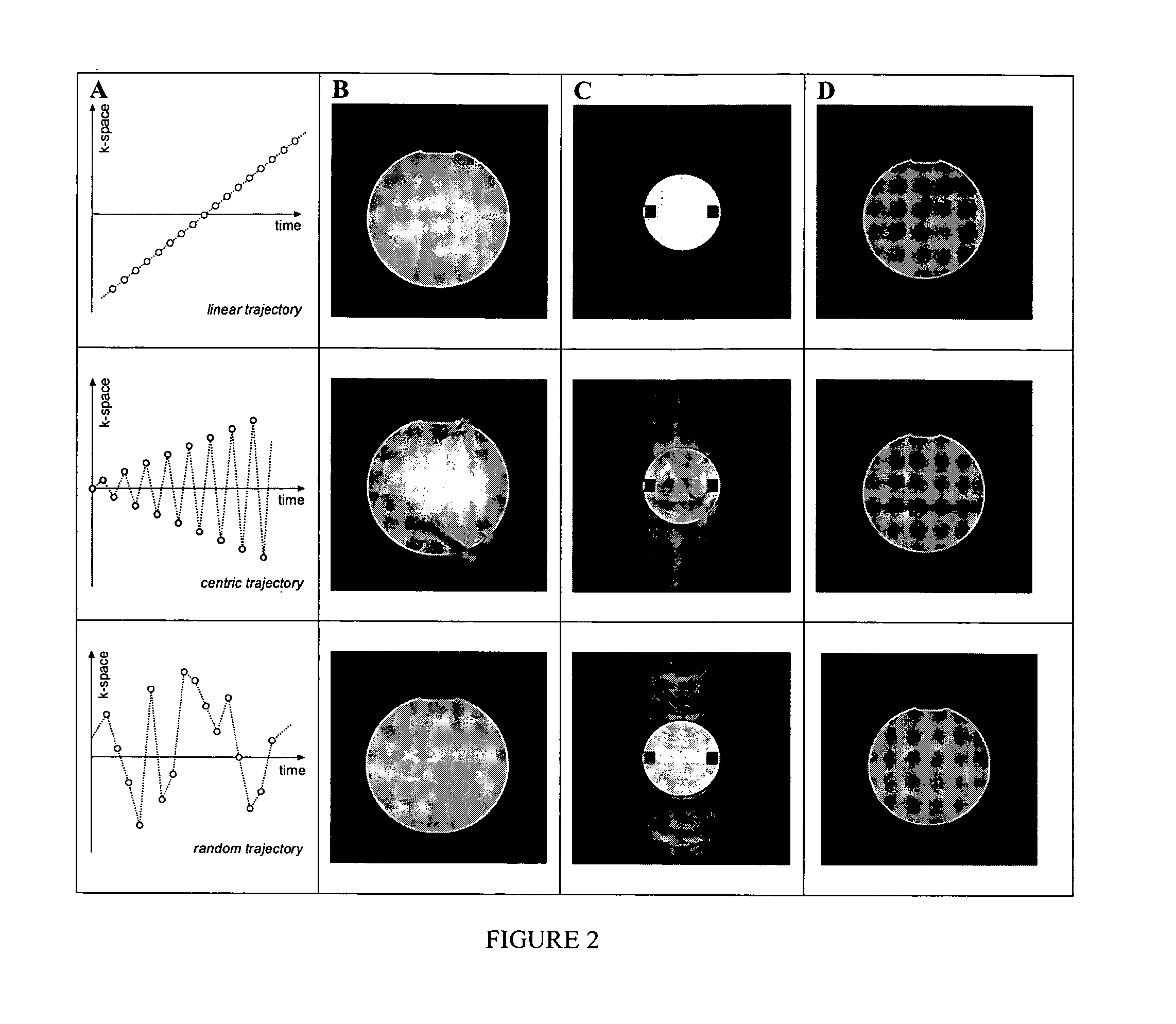Generic eddy-current compensation in magnetic resonance imaging
a magnetic resonance imaging and generator technology, applied in the field of magnetic resonance (mr) imaging, can solve the problems of significant signal instabilities and fluctuations leading to image artefacts, inability to use sequences, and inability to fully balance the truefisp scheme with regard to motion. achieve the effect of convenient implementation
- Summary
- Abstract
- Description
- Claims
- Application Information
AI Technical Summary
Benefits of technology
Problems solved by technology
Method used
Image
Examples
Embodiment Construction
[0038] The problem of imperfections (i.e., artefacts) in the balanced TrueFISP sequence scheme arising due to eddy-currents related residual magnetic fields, or uncompensated first order phase encoding gradient moments in the presence of flow or motion, are addressed by the method of MR imaging of the present invention. The method, in accordance with the present invention, is generic in that it is generally independent of the particular MR system and related sequence parameters used. Instead, the present invention is broadly applicable to MR imaging systems that utilize TrueFISP sequences, such as the nuclear magnetic resonance apparatus disclosed in U.S. Pat. No. 4,769,603 to Oppelt et al., which is incorporated herein by reference in its entirety. To facilitate an easy understanding of the present invention, the method in accordance with the present invention will be described generally first, then specific examples and a specific algorithm will be described.
[0039] The TrueFISP M...
PUM
 Login to View More
Login to View More Abstract
Description
Claims
Application Information
 Login to View More
Login to View More - R&D
- Intellectual Property
- Life Sciences
- Materials
- Tech Scout
- Unparalleled Data Quality
- Higher Quality Content
- 60% Fewer Hallucinations
Browse by: Latest US Patents, China's latest patents, Technical Efficacy Thesaurus, Application Domain, Technology Topic, Popular Technical Reports.
© 2025 PatSnap. All rights reserved.Legal|Privacy policy|Modern Slavery Act Transparency Statement|Sitemap|About US| Contact US: help@patsnap.com



